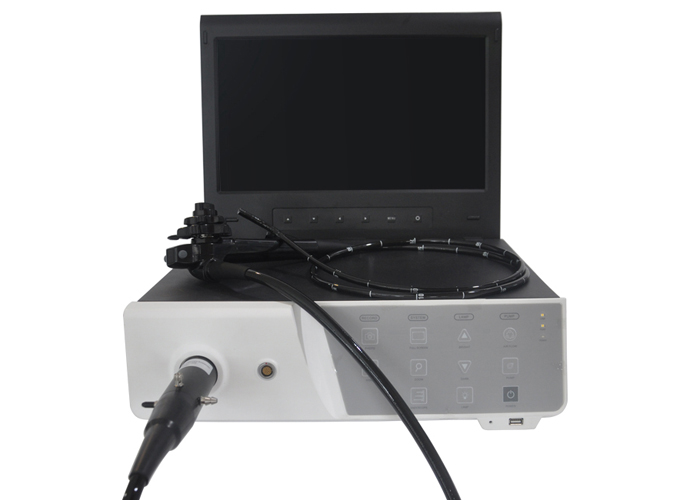Veterinary Endoscope is used in the examination of animal digestive system, respiratory system, reproductive system and other diseases. It can be used with special tools to treat, remove foreign bodies swallowed by animals, and surgery and orthopedics.
Application of Veterinary Endoscope in the diagnosis of foreign bodies in the digestive tract of dogs.
Since dogs, especially large dogs in free range, often swallow foreign objects such as bones, clothes, gloves, golf balls, thread balls, fish hooks, etc., the types of foreign objects in the digestive tract of dogs are also strange, which gives the diagnosis of foreign objects in the digestive tract of dogs. Nature adds a lot of trouble. High-density substances (such as bones, fish hooks, etc.) can be diagnosed by X-ray, while some low-density substances (such as: rags, leather, etc.) It is difficult to determine the type, material, size, etc. of foreign objects. The endoscope can accurately diagnose the size and type of foreign bodies in the digestive tract, and find a more definite basis for further treatment.
Steps:
First, perform general anesthesia on the sick dog. After the sick dog is completely anesthetized, the inspection operation can be carried out. During the entire inspection process, a dedicated person will monitor the heartbeat and breathing. According to the size and shape of the dog’s mouth, choose a suitable bite pad, place it behind the two pairs of canine teeth, and fasten the upper and lower jaws firmly with a bandage. The dog lies on its side in Baoding. Estimate the length of the endoscope into the dog’s stomach. Let the dog's head tilt back slightly to keep the trachea and esophagus open. Turn on the endoscope video capture system for the entire process of video capture. Gently insert the endoscope into the dog’s mouth through the round hole in the center of the bite pad. Under the monitoring of the monitoring system, adjust the up, down, left, and right directions of the endoscope lens to maintain a wide field of vision. The movement must be light, and rough and fierce penetration is absolutely prohibited. Slowly pass through the larynx, adjust the direction of the endoscopic lens, move slowly along the esophagus, and enter the stomach through the cardia. The length of the endoscopic entry should be estimated to reach the stomach. The length of the stomach, there may be bubbles and food residues in the stomach. At this time, you can turn on the electric suction device to flush and exhaust, change the direction of the endoscopic lens and the distance of forward and backward, carefully observe and look for suspicious foreign objects in the stomach, until you find until. Grasp the foreign body with biopsy forceps to confirm the size and nature of the foreign body. For small foreign bodies, try to use the biopsy forceps to clamp the foreign body and bring it out of the body with the endoscope. Otherwise, slowly pull out the endoscope and prepare the dog for gastric foreign body removal surgery. The used endoscopes should be subjected to strict disinfection treatment in the disinfection tank, such as prostaglandin, glutaraldehyde, etc., after being dried, placed in a cool disinfection cabinet for next use.
Precautions:
1. During endoscopy, because the equipment of the endoscope is relatively expensive, the bite pad is a very important accessory accessory. Due to the different sizes of dog breeds, it is necessary to match the bite pads of different sizes and shapes. On the one hand, it is conducive to the smooth inspection of the endoscope, and more importantly, it is to prevent the dog from biting the endoscope.
2. Precautions during the inspection, the movements must be light, not rough operations, and slowly move along the esophagus. When the resistance increases, you can step back a little or pause the operation, and then continue to insert it after the muscles relax. During the examination, due to the prolongation of time, bloating may occur in dogs. You can use a trocar or a large needle to deflate the stomach or use a matching aspirator to expel air from the stomach. Since the dog has been under general anesthesia during the inspection, someone should monitor the dog's heartbeat and breathing.
3. According to the type and location of the foreign body, some tools can be used to remove the foreign body from the stomach or esophagus, so as to avoid the pain of gastrotomy in animals.
